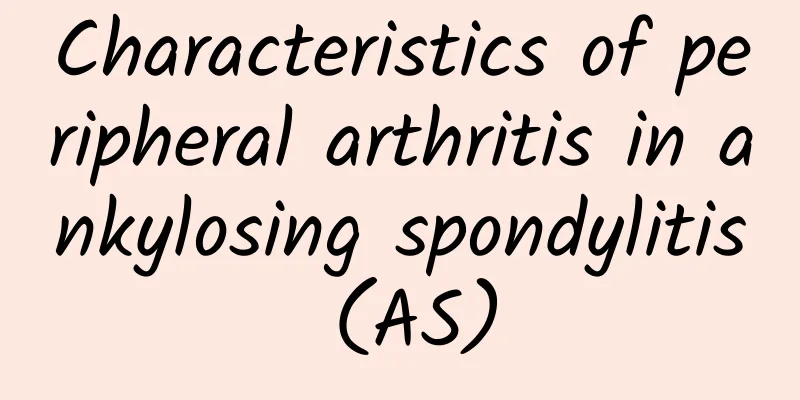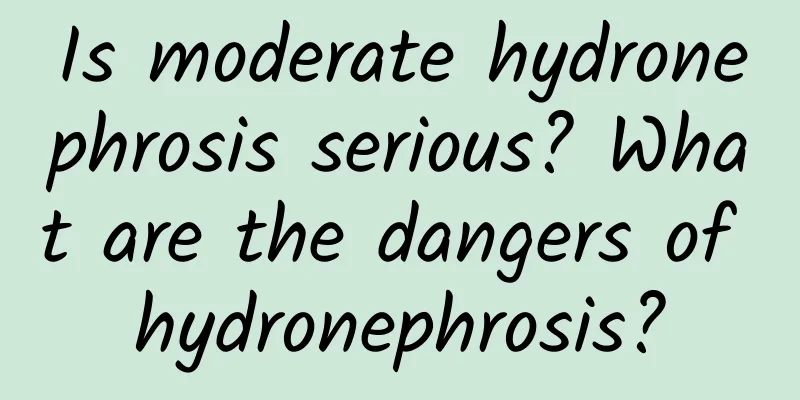Characteristics of peripheral arthritis in ankylosing spondylitis (AS)

|
The incidence of AS peripheral arthritis is related to age. The younger the age of onset, the more obvious the peripheral joint involvement and the higher the disability. The main manifestations of peripheral joint involvement are that the lower limbs are more affected than the upper limbs, and single/oligojoint involvement is common and asymmetric. Among them, the hip, knee, and ankle joints are easily affected. 1. The incidence of AS hip joint lesions in my country is higher than that in foreign countries. AS hip joint lesions usually occur in the early stage of the disease. Literature reports that 94% of hip joint lesions occur within 5 years of AS onset, and unilateral involvement is common. Clinical manifestations include groin and hip pain, and limited joint flexion, extension, rotation, adduction and abduction. The pain is significantly aggravated when standing, walking and holding heavy objects in a weight-bearing position. The symptoms are obvious at night and slightly relieved after morning activities. X-rays show erosion and destruction of the articular surface, surrounding reactive bone hyperplasia and sclerosis, osteophytes, and narrowing of the joint space, but the shape of the femoral head generally exists. At the same time, erosion of the articular surface of the hip joint occurs simultaneously in the weight-bearing and non-weight-bearing parts of the acetabulum and femoral head, which is also the difference from femoral head necrosis. 2. The incidence of knee joint involvement in AS is 32%-50%. Knee joint lesions are manifested as swelling and pain in the knee joint, and in severe cases, knee extension may be limited. The knee joint lesions of most AS patients are unilateral or alternating bilaterally. Some patients may also form popliteal cysts at the back of the knee joint due to a large amount of joint effusion in the affected knee joint, but after the disease is controlled, the swelling and pain in most patients can disappear, and the joint function can be restored well. 3. The incidence of ankle joints in AS is 17% to 24%. In addition, the shoulder, elbow, wrist joints, small joints of the hands and feet, temporomandibular joints, and sternocostal joints are also affected. AS combined with peripheral joint involvement usually occurs during the active stage of the disease. If actively treated, arthritis in most patients can be effectively controlled. Except for hip joint involvement, it rarely causes disability and functional impairment. |
<<: Does swimming help with lumbar disc herniation?
>>: What are the symptoms of aortic aneurysm?
Recommend
What causes abdominal muscle tension?
Abdominal muscle tension can be caused by a varie...
Which type of people are prone to anal fistula and perianal abscess?
People with low immunity, sedentary lifestyle, un...
What are the symptoms of synovitis?
Typical symptoms of synovitis include joint pain,...
Can perianal abscess surgery completely cure it?
Whether perianal abscess surgery can completely c...
Who is prone to gallstones?
People who are at high risk of gallstones include...
Does amenorrhea affect breast hyperplasia?
Amenorrhea may have an impact on breast hyperplas...
Can endometritis cause urinary tract infection?
Endometritis may cause urinary tract infection, a...
What to do if you have a breast cyst
Breast cysts are usually benign lesions. There is...
Kidney stones and bleeding in urine
If elderly people develop kidney stones accompani...
Anal itching caused by hemorrhoids
Anal itching may be caused by hemorrhoids, which ...
How to prevent and treat gallstones
The prevention and treatment of gallstones requir...
Can a sudden increase in breast cysts be a sign of cancer?
The sudden enlargement of a breast cyst does not ...
Is congenital hydrocephalus a neural tube defect?
Congenital hydrocephalus is not a neural tube def...
How to diagnose perianal abscess
It may not be easy to identify an anal abscess yo...
Symptoms of congenital heart disease in newborns
Symptoms of congenital heart disease in newborns ...









